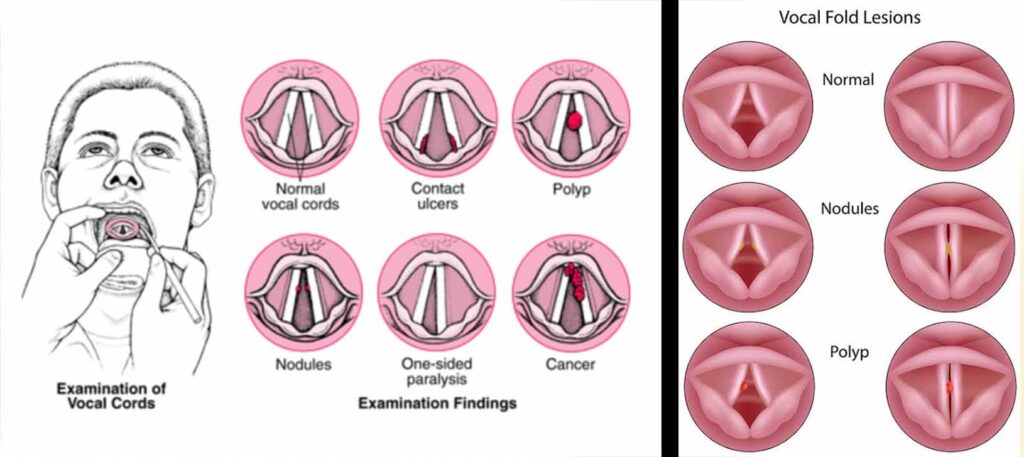Vocal Cord Nodules & Polyps
Services > Vocal Cord Nodules & Polyps
- Vertigo
- Ear Wax
- Ear Pain
- Ear Infections
- Ear Cholesteatoma
- Acoustic Neuroma
- Torn Ear Lobes
- Perforation In Ear
- Ototoxicity
- Otitis Media
- Mastoiditis
- Hearing loss
- Foreign bodies in the ear
- Rhinoplasty
- Breathing Problems
- Foreign bodies in nose
- Nasal Bone Fracture
- Nasal Septum
- Nasal Polyp
- Nasal Deformity
- Nosal Allergy Clinic
- Nose Bleeding Treatment
- Sinus Treatment
- Chronic Sinusitis
- Adenoidectomy
- Voice Disorders
- Salivary gland problems
- Papillary Thyroid Carcinoma
- Oral and Throat problems
- Laryngeal Vocal Nodules
- Laryngeal Vocal Cord Palsy
- Foreign body in esophagus
- Foreign body in bronchus
- Difficulty in Swallowing
- Cancer of the Larynx
- Sleep Apnea
- Snoring Treatment
- Head & Neck Cancer
- Thyroid Cancer / Papillary Carcinoma

Vocal Cord Polyps
Vocal cord polyps are often the result of an acute injury (such as from shouting at a football game) and typically occur on only one vocal cord. Polyps may have several other causes, including gastroesophageal reflux, or chronic inhalation of irritants (such as industrial fumes or cigarette smoke). Polyps tend to be larger and bulge out more than nodules. Polyps are common among adults.
Vocal Cord Nodules
Vocal cord nodules occur on both vocal cords and result mainly from chronic abuse of the voice (habitual yelling, singing, or shouting or using an unnaturally low frequency). Nodules can also occur in children.
When relaxed, the vocal cords normally form a V-shaped opening that allows air to pass freely through to the trachea. The cords open when air is drawn into the lungs (inspiration) and close during swallowing or speech.
Holding a mirror in the back of a person’s mouth, a specially trained doctor can often see the vocal cords and check for problems, such as contact ulcers, granulomas, polyps, nodules, paralysis, and cancer. All of these problems affect the voice. Paralysis may affect one (one-sided) or both vocal cords (two-sided—not shown).
Symptoms of vocal cord nodules, polyps, and granulomas include chronic hoarseness and a breathy voice, which tend to develop over days to weeks.
Diagnosis
- Direct inspection with a mirror or viewing tube
- Sometimes biopsy
A doctor makes the diagnosis of vocal cord nodules, polyps, and granulomas by examining the vocal cords with a mirror or a thin, flexible viewing tube (laryngoscopy).
Sometimes the doctor removes a small piece of tissue for examination under a microscope (biopsy) to make sure the growth is not cancerous (malignant).
Treatment
- Resting the voice
- Sometimes voice therapy
- Sometimes surgery
Treatment of vocal cord nodules, polyps, and granulomas is to avoid whatever is irritating the voice box (larynx) and rest the voice. If abuse of the voice is the cause, voice therapy conducted by a speech therapist may be needed to teach the person how to speak or sing without straining the vocal cords.
Most nodules and granulomas go away with this treatment. Granulomas that do not go away can be removed surgically but tend to come back.
Most polyps must be surgically removed to restore the person’s normal voice.

